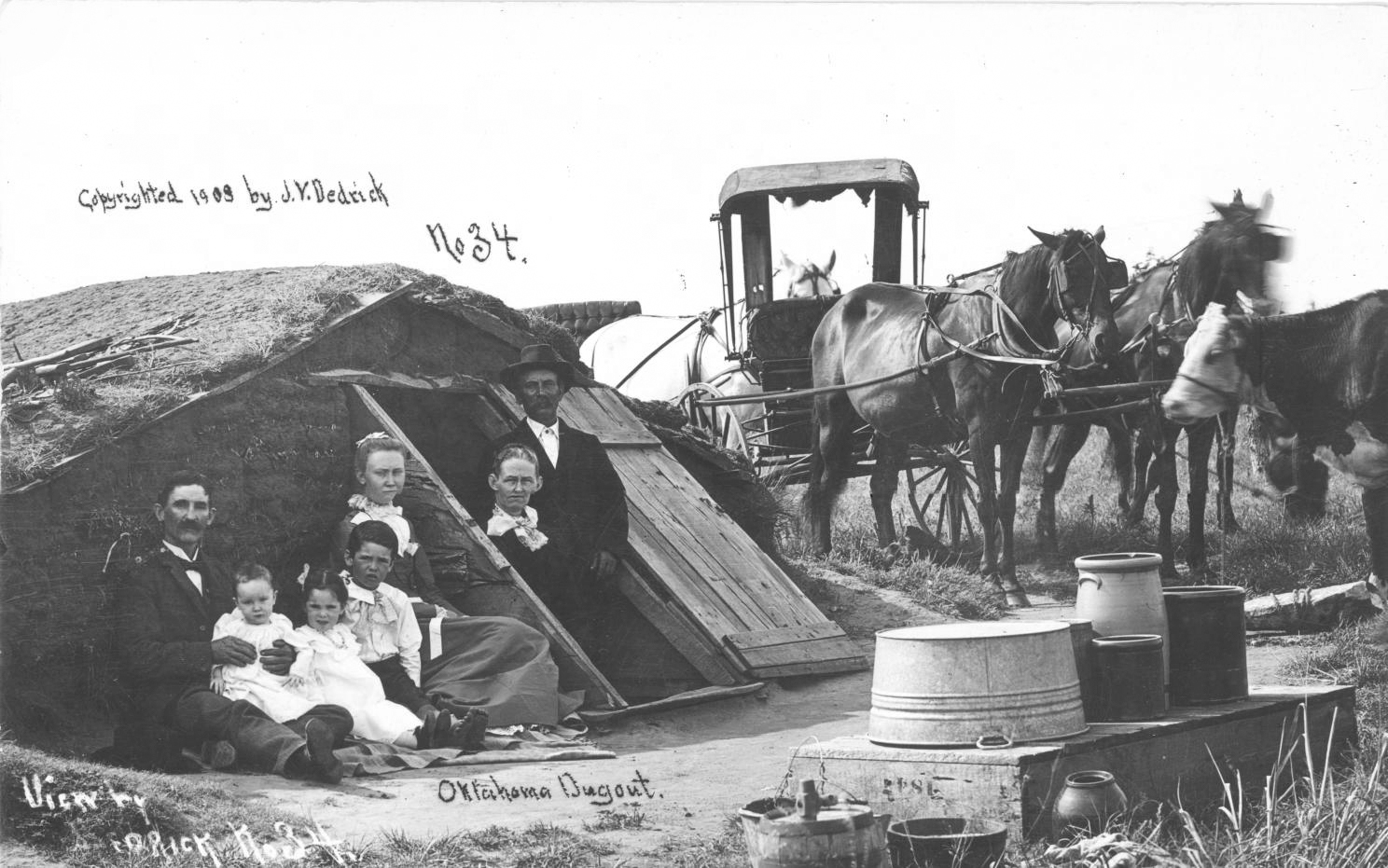DUGOUT.
A type of dwelling, shelter, or other structure that is wholly or partially below ground constitutes a dugout. Dugouts were often carved into the sides of hills, banks, or ravines and were enclosed by a front wall built of sod or logs. Where the terrain possessed little relief, dugouts were hollowed out of the ground to a depth of about two to six feet. They were typically rectangular in plan and measured between twelve and eighteen feet on a side. The roof was supported by purlins, logs, or poles extending the length of the dugout.
Dugouts represent a type of vernacular architecture closely associated with but not unique to the North American prairie plains. Some colonists on the eastern seaboard and Mormon settlers in Utah constructed and lived in dugout shelters. On the Great Plains the dugout was often one of the first dwellings constructed by settlers as they confronted the challenge of building in a largely treeless environment. In Oklahoma dugouts were utilized in the central and western portions of the state. After the land openings some homesteaders built dugouts as a way of validating their claim. In numerous instances, dugout schools and dugout churches were also built.
As dwellings, dugouts were affordable and practical. They provided refuge from tornadoes, a warm hearth in the winter, and a cool retreat in the summer. Problems with ventilation, lighting, insects, flooding or seepage, and the stigma of living underground like prairie dogs, contributed to the perception of the dugout as an expedient but temporary solution to a housing problem. Indeed, the social pressure to live in a frame house, together with improved access to milled lumber, spelled the demise of the dugout as a residential form. Few dugouts were built in Oklahoma after 1900, and many of those still in existence were used as cellars or storm shelters.
See Also
ARCHITECTURE, FARMING, FOLK ARCHITECTURE, FOLKLIFE, SETTLEMENT PATTERNS, SOD HOUSE
Bibliography
Cass G. Barns, The Sod House (Lincoln: University of Nebraska Press, 1930).
Everett Dick, Conquering the Great American Desert (Lincoln: Nebraska State Historical Society, 1975).
Grant Foreman, A History of Oklahoma (Norman: University of Oklahoma Press, 1945).
Veda Giezentanner, "In Dugouts and Sod Houses," The Chronicles of Oklahoma 39 (Summer 1961).
Donald E. Green, ed., Rural Oklahoma (Oklahoma City: Oklahoma Historical Society, 1977).
LeRoy R. Hafen and Carl Coke Rister, Western America: The Exploration, Settlement, and Development of the Region Beyond the Mississippi (New York: Prentice-Hall, 1941).
Citation
The following (as per The Chicago Manual of Style, 17th edition) is the preferred citation for articles:
Alyson L. Greiner, “Dugout,” The Encyclopedia of Oklahoma History and Culture, https://www.okhistory.org/publications/enc/entry?entry=DU003.
Published January 15, 2010
© Oklahoma Historical Society



